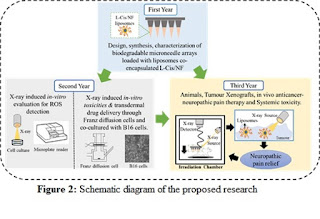Linezolid
Pharmacodynamics
Linezolid is a synthetic antibacterial agent of a new class of antibiotics, the oxazolidinones, which has clinical utility in the treatment of infections caused by aerobic Gram-positive bacteria. The in vitro spectrum of activity of linezolid also includes certain Gram-negative bacteria and anaerobic bacteria. Susceptible organisms include methicillin- and vancomycin-resistant staphylococci, vancomycin-resistant enterococci, penicillin-resistant pneumococci and anaerobes. Oxazolidinones inhibit protein synthesis by binding at the P site at the ribosomal 50S subunit. Resistance to other protein synthesis inhibitors does not affect oxazolidinone activity, however rare development of oxazolidinone resistance cases, associated with 23S rRNA alterations during treatment have been reported. Linezolid inhibits bacterial protein synthesis through a mechanism of action different from that of other antibacterial agents; therefore, cross-resistance between linezolid and other classes of antibiotics is unlikely.
Mechanism of action
Linezolid is a synthetic antibacterial agent of the oxazolidinone class of antibiotics. It has in vitro activity against aerobic Gram positive bacteria, certain Gram negative bacteria and anaerobic microorganisms. It selectively inhibits bacterial protein synthesis through binding to sites on the bacterial ribosome and prevents the formation of a functional 70S-initiation complex. Specifically, linezolid binds to a site on the bacterial 23S ribosomal RNA of the 50S subunit and prevents the formation of a functional 70S initiation complex, which is an essential component of the bacterial translation process. The results of time-kill studies have shown linezolid to be bacteriostatic against enterococci and staphylococci. For streptococci, linezolid was found to be bactericidal for the majority of strains. Linezolid is also a reversible, nonselective inhibitor of monoamine oxidase. Therefore, linezolid has the potential for interaction with adrenergic and serotonergic agents.
Absorption
Linezolid is rapidly and extensively absorbed after oral dosing. Maximum plasma concentrations are reached approximately 1 to 2 hours after dosing, and the absolute bioavailability is approximately 100%.
Volume of distribution
40 to 50 L [healthy adult volunteers]
Protein binding
31%
Metabolism
Linezolid is primarily metabolized by oxidation of the morpholine ring, which results in two inactive ring-opened carboxylic acid metabolites: the aminoethoxyacetic acid metabolite (A), and the hydroxyethyl glycine metabolite
Half life
4.5-5.5 hours
Toxicity
Clinical signs of acute toxicity lead to decreased activity, ataxia, vomiting and tremors.
Drug drug interaction
pseudoephedrine + linezolid =Using pseudoephedrine together with linezolid can increase your blood pressure
linezolid + 5-hydroxytryptophan =Coadministration of linezolid with serotonergic agents may potentiate the risk of serotonin syndrome, which is a rare but serious and potentially fatal condition
fentanyl + linezolid =Using linezolid together with fentaNYL is not recommended. Combining these medications can increase the risk of respiratory depression, low blood pressure, and a rare but serious condition called the serotonin syndrome, which may include symptoms such as confusion, hallucination, seizure, extreme changes in blood pressure, increased heart rate, fever
pseudoephedrine + linezolid = inc systolic blood pressure
Food interaction
high in tyramine content. Doing so can raise your blood pressure to dangerous levels, a condition known as hypertensive crisis. The condition is potentially fatal and may cause symptoms such as severe headache, confusion, blurred vision, problems with speech or balance, nausea, vomiting, chest pain, convulsions, and sudden numbness or weakness.
Terapeutic uses
Treating certain bacterial infections.
Linezolid is an oxazolidinone antibiotic. It works by interfering with the production of proteins needed by bacteria to grow.
Reference- Tripathi KD "Essential of medical pharmacology" 7th edition, page no- 758



No comments:
Post a Comment